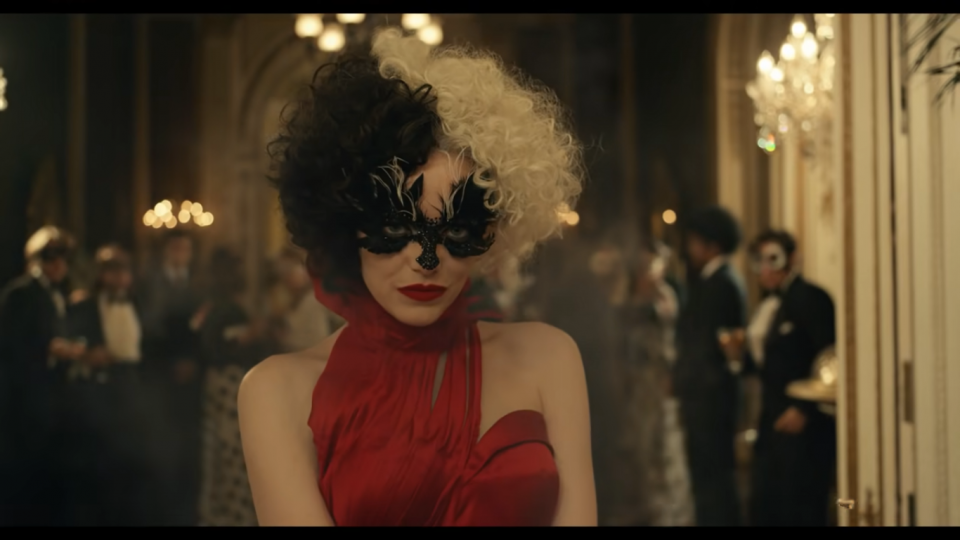Is The Femme Fatale Stereotype As Glitzy As It Seems?
Disney brings the age-old trope back to the silver screen in new live-action film ‘Cruella’
Engulfed by the best of fashion, an army of henchmen and all the riches in the land, she attracts everyone’s attention with her glamorous entry on screen. Her bewitching blood-red smirk and sensual saunter exude dominance and a single glance is deadly enough for the meek. That’s the femme fatale we all know and either love or hate in movies.
The femme fatale trope first made its way into the American film noir and flourished in the Forties and Fifties in detective and horror sagas as a female anti-hero portrayed as every man’s weakness — she decapacitates each valiant with her entrancing aura. Notably, these archetypes arise from mythology and folklore, including enchantresses like Circe, Medusa and Medea, the biblical Eve and Jezebel and even the Hindu Mohini and Vishakanyas. Legendary actors like Rita Hayworth, Ava Gardner and Lizabeth Scott were some of the most famous vamps of the film noir era. However, in real life, no one embodies her better than the ravishing Marilyn Monroe, whose mysterious yet charming demeanor made her the sexiest woman alive.
The entertainment giant Walt Disney Studios is renowned for its ravaging, seductive and transgressive female anti-heroes; Maleficent, Ursula, Cruella and the Evil Queen are as much a part of our childhood as their protagonist counterparts. Up next, Disney’s live-action feature film Cruella (set to release in India in August) is a prequel to the 101 Dalmatians franchise. Set amidst the underground punk revolution London in the Seventies, it reveals the transformation of the mischief-loving self-willed fashion student Estella into the villainous puppy-murdering Cruella played by Emma Stone.
While Cruella’s story arch is liberating for the image of female antagonists, as is Maleficent’s, the femme fatale stereotype is more problematic than seems on the surface. On the one hand, these ravenous women depict strength, dominance, power and most importantly, independence. On the other hand, however, the trope was essentially written to show male inadequacy. Post-feminism activists argue that the femme fatale character is written more as a cathartic experience for the male gaze than to show female emancipation. Jessica Rabbit, Black Widow (Scarlett Johansson in the Marvel Cinematic Universe) and Catherine Tramell (Sharon Stone in Basic Instinct) are just some modern examples originally written to embody the super-sexualized female power. Scarlett O’Hara (played by Vivienne Leigh in Gone With The Wind, 1939), Gilda Mundson (played by Rita Hayworth in Gilda, 1946) and Cora Smith (played by Lana Turner in the 1946 film The Postman Always Rings Twice) were some of the characters whose free-willed depiction of sexuality made them some of the most popular pin-up girls during the Second World War — contradicting the sexual freedom granted to them by their writers.
It has long been deciphered that women in power are often taken as sexual objects by men, but so are those without authority. In contrast, freedom from the taboos behind female sexuality doesn’t come easy, unlike for male sexuality. Although the hyper-sexualized image stuck with Jessica Rabbit’s and Black Widow’s characters, newer ‘femme fatales’ are depicted to be more self-righteous and less sexual. Disney’s Cruella and Maleficent fall in that category. Cruella may be evil and murderous, but her revenge-driven struggle and self-built empire are barely male-dependent. The only thing vampy about her is her yearning for canine fur, her incandescent demeanor and her inscrutable sense of pride. Aptly, Cruella’s latest avatar describes herself as “brilliant…bad…and a little bit mad.”
Watch Disney Cruella on Disney+ Hotstar on August 27th. Watch the trailer below.






